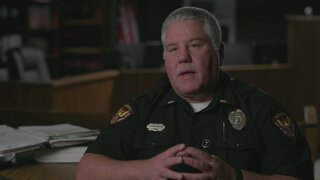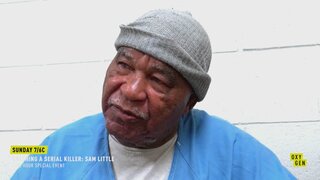‘It Tore Their Family In Two’: One Of Serial Killer Samuel Little’s Murders Was Different Than The Rest
For more than 20 years, Melissa Thomas’ family fought for justice and tried to find answers in their loved one’s brutal murder.
Serial killer Samuel Little became infamous for targeting vulnerable women, often preying on those who lived on the fringes of society as sex workers and drug users.
Limiting his hunting grounds to mostly dilapidated, high-crime areas, Little told investigators he never picked up victims who would be “immediately missed” or that were “very important to either family or business or somebody.”
One of his victim’s families, however, fought for more than 20 years to get justice in their loved one’s murder.
On Jan. 31, 1996, Melissa Thomas left her family’s house in Opelousas, Louisiana, and headed to a nearby gas station for a pack of cigarettes. Across the street from the store was a cemetery, which was Melissa’s shortcut to get home.
“But she didn’t come back that day. She didn’t come back at all,” her brother, Joe Thomas, told “Catching A Serial Killer: Sam Little,” streaming now on Oxygen.
Melissa, 24, was later discovered dead in the cemetery. She was lying face-down, and she had scratch marks on her neck, leading investigators to believe she had been strangled. She was fully dressed, and no trace evidence was found on her body.
“Even right now, talking about it is very emotional. Her life was taken so young … I’ll never forget,” Joe told “Catching A Serial Killer” host Beth Karas.
Joe and his sister, Emma Thomas, said Melissa’s murder took a huge toll on their parents and “tore their family in two.”
“Years later, my mom ended up passing with a broken heart. It broke her down. My dad ended up passing away not knowing who murdered his daughter,” Joe said.
Joe and Emma never stopped searching for answers in their sister’s murder, and they continuously reached out to local law enforcement for updates on the case.
Opelousas City Police Department Captain Crystal LeBlanc, who took over the investigation 13 years later, entered the details of Melissa’s murder into a national database, hoping it would potentially match up with other cases.
It was not until 2018, however, that authorities learned Melissa had been one of Little’s 93 victims.
While carrying out three life sentences for a string of murders in Los Angeles, Little cut a deal with the Texas Ranger Division — if he confessed to one of their cold cases, they would waive the death penalty and relocate him to a more comfortable county jail in Texas.
Little agreed, and he went on to confess to dozens of other murders, including a victim he remembered killing in Opelousas.
Investigators quickly reached out to Louisiana law enforcement to see if they had any open cases that matched Little’s description.
“He said, ‘Did you have a female in the cemetery wearing a flowered print dress?’ And the only way to know that is if you saw the pictures and knew that case file because that wasn’t made public,” Captain LeBlanc told “Catching A Serial Killer.”
To finally find out what happened to Melissa that night in 1984, she drove to Texas to interview Little, who admitted to strangling her to death.
“He was stroking her neck, and he said that while he was stroking her neck … she said, ‘Why are you touching my neck like that? You a serial killer or something?’ And at that point, he said, ‘I got angry,’ and he said, ‘And I just started choking her,’” Captain LeBlanc recalled.
During their conversation, she questioned if Little had asked God to forgive him for his crimes.
“And he said, ‘Why do I have to ask Him to forgive me? He made me this way.’ I was like, ‘Wow, well, you really are a killer,’” she said.
Little went on to provide investigators with 650 hours’ worth of confessions, and he later pleaded guilty to murdering five women in Texas and Ohio, resulting in additional life sentences, reported Cleveland’s The Plain Dealer newspaper.
The FBI has since released a timeline of Little’s life and crimes, and although Little cannot remember the names of many of his victims, he has drawn portraits of the women he killed in hopes of identifying them.
The FBI continues to ask for public assistance in matching the remaining unconfirmed victims.
To hear more from investigators, watch “Catching A Serial Killer: Sam Little" now on Oxygen.







































